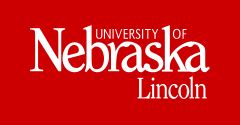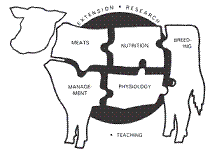Animal Science, Department of
Date of this Version
2017
Citation
2017 Nebraska Beef Cattle Report. University of Nebraska Extension MP104. Lincoln, NE.
Abstract
Four annual forage mixtures containing brown mid- rib sorghum sudangrass or German foxtail millet, cowpeas or soybeans, and forage collards were compared to the sorghum sudangrass or millet as monocultures in the Nebraska High Plains on dryland acres to determine the tonnage, crude protein, and digestibility available for beef cattle. Th e forage mixtures and the millet resulted in greater crude protein than the sorghum sudangrass. Total digestible nutrients of the mixers were similar. Sorghum sudangrass resulted in the most tonnage. These forage options could have been hayed or windrow grazed in the fall and would have likely resulted in 1.5– 2.0 lb/d gain for 500 lb calves. Grazing these forages in the summer would have likely resulted in better quality but would require rotational grazing management. Agronomic impacts of these mixtures on the subsequent crop were not measured. Foxtail millet was the most economical crop to produce.
Included in
Large or Food Animal and Equine Medicine Commons, Meat Science Commons, Veterinary Preventive Medicine, Epidemiology, and Public Health Commons


Comments
© 2016 The Board of Regents of the University of Nebraska.